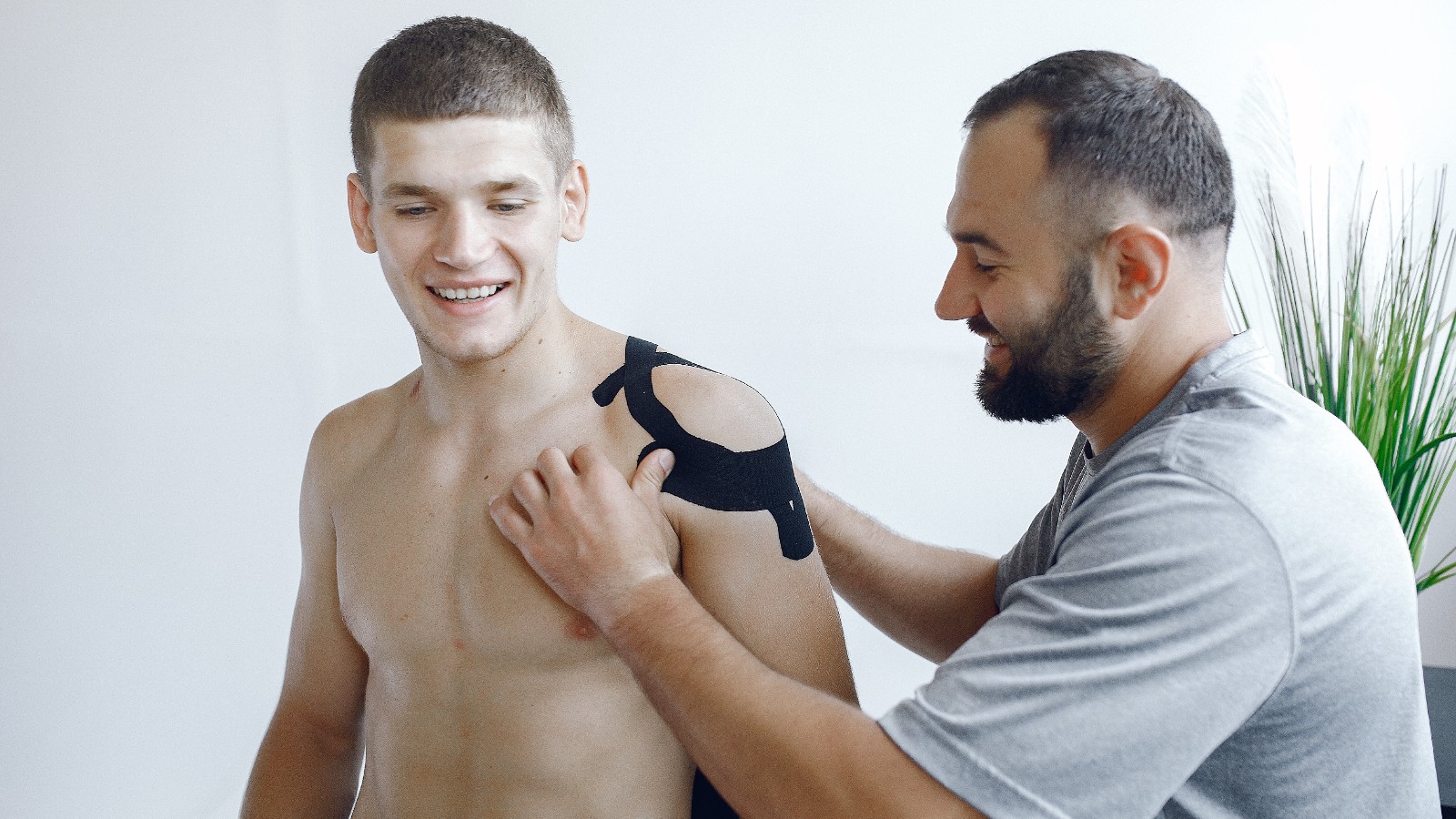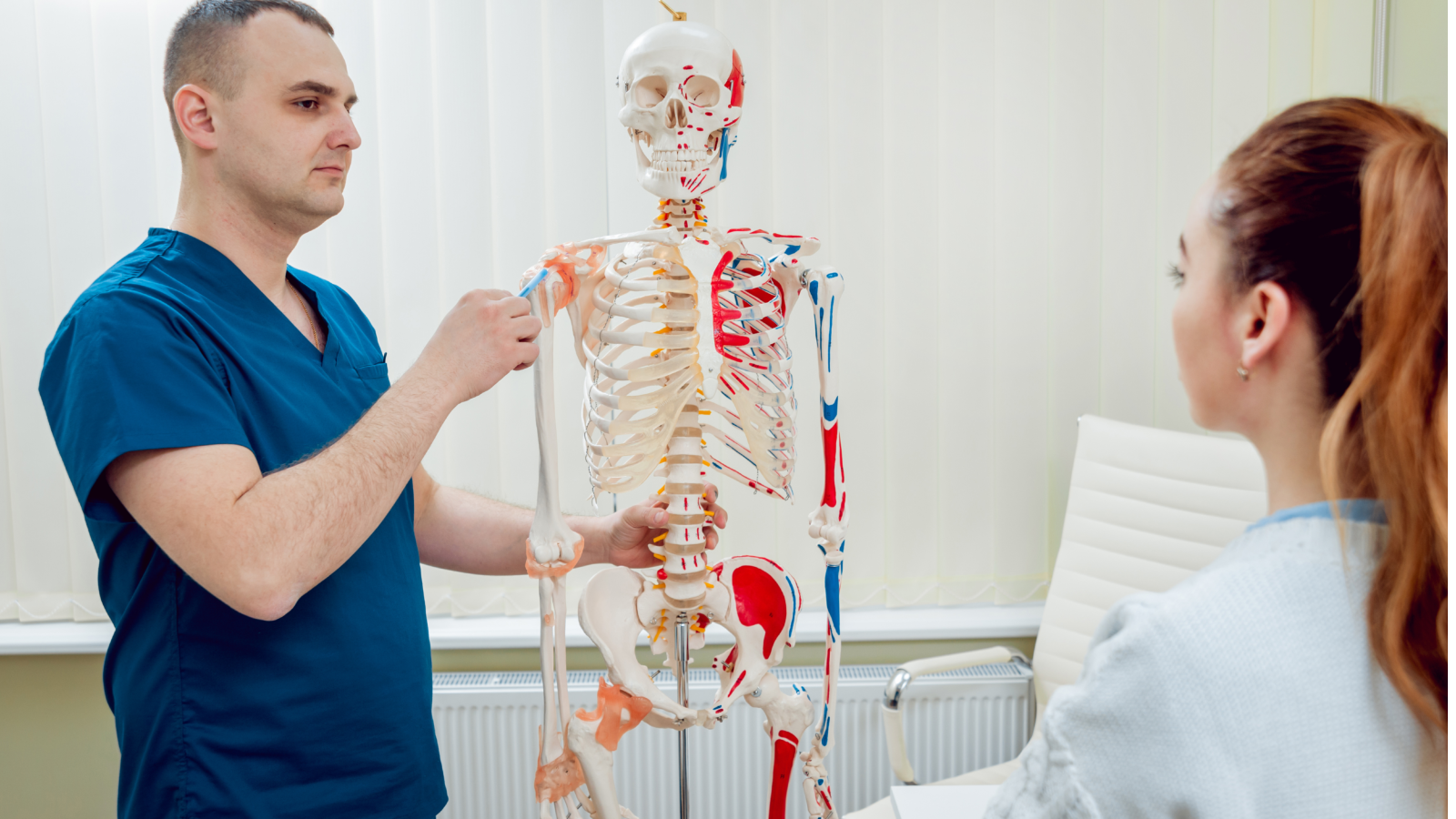When working with moderate to high-risk clients you may be required to refer them to a medical and/or allied health professional and then incorporate any recommendations from these personnel into the program plan. It is therefore important that you understand the different roles and responsibilities of these professionals.
-
Allied Health Professionals - University qualified professionals who are not part of the medical, dental or nursing professions. They specialise in identification, evaluation and prevention of a range of conditions and illnesses. As a general rule, allied health professionals do not prescribe medication, however, there are some circumstances and certain products that they are permitted to prescribe/administer.
-
Medical Professionals - University qualified professionals who have completed a medical, nursing or dentistry degree and may also have undertaken further specialist training/education. General Practitioners (GPs) or a Dentist are usually the first point of contact for patients (depending on the health concern) and they may then refer a patient to a specialist or an allied health professional for ongoing treatment.
In Australia, all health practitioners, both medical doctors/specialists and allied health professionals are required to be suitably qualified, registered with the appropriate authority, and abide by any regulatory requirement as stipulated by law and authority guidelines.
Registered health practitioners are regulated by the Australian Health Practitioners Regulation Agency (AHPRA). They set standards and policies that registered practitioners are required to abide by. They are also responsible for publishing a National Register of Practitioners so that members of the public (and referring fitness professionals) can access important information about relevant medical and allied health professionals.
Specialise in the delivery of exercise for the prevention and management of chronic diseases and injuries. AEPs provide support for clients with conditions such as cardiovascular disease, diabetes, osteoporosis, mental health problems, cancer, arthritis, pulmonary disease and more.
They provide lifestyle education and assist in such things as recovery from cancer treatments, reduce the risk of an increase in diabetes and assist in rehabilitation following cardiac events. Allied Health Professions Australia provides this overview of Exercise Physiology on their website.
Diagnoses and treats neuromuscular disorders, with an emphasis on treatment through manual adjustment of the spine. Their priority is to reduce pain, improve mobility and educate clients on exercise, ergonomics and other therapies to treat back pain. Allied Health Professions Australia provides this overview of Chiropractic care on their website.
People suffering musculoskeletal, cardiothoracic, and/or neurological difficulties due to accidents, injuries, disability or ageing benefit from physiotherapists. Their main aim is to improve functional movement and flexibility. Allied Health Professions Australia provides this overview of Physiotherapy on their website.

Educate communities and individuals on the impact of healthy eating and good nutrition. They identify and assess problems in order to develop healthy eating plans for clients as well as counsel clients on special diet modifications. Allied Health Professions Australia provides this overview of Dietetics on their website.
Identify, assess and treat problems relating to the foot and lower limb. These conditions include nail and skin disorders, foot and ankle injuries and other complications due to underlying medical conditions. Allied Health Professions Australia provides this overview of Podiatry on their website.
.jpg)
Deal with human thinking behaviour. They are devoted to helping people and the community to find solutions to real-life problems such as improving mental health and wellbeing, learning, performance, relationships and societal cohesiveness. They differ from Psychiatrists which are medical specialists. Both professions deal with similar types of patients, however, psychologists are not able to prescribe medication whereas psychiatrists can. Allied Health Professions Australia provides this overview of Psychology on their website.
Improve client's function and mobility by the use of massage techniques. They manipulate people's soft tissue by the use of finger and hand pressure to assist in healing parts of the body that have been injured or left inactive due to age, illness or injury.
Focus on individual elements of the body in order to provide a better functioning system. They analyse the structure and functions of muscles, tissues, nerves, skeleton, joints, and internal organs so the body can function as one unit.
Manual techniques such as massage and stretching are used within their treatments and they are qualified in clinical/health science and also applied science and are therefore able to perform standard medical examinations of the musculoskeletal, cardiovascular, respiratory and nervous systems insofar as they relate to whole-body functionality. Allied Health Professions Australia provides this overview of Osteopathy on their website.
Help to improve patient's ability with undertaking everyday self-care activities such as showering, dressing, preparing food, and work. They often work with people who have a disability, have a chronic medical condition, or are recovering from an injury. Allied Health Professions Australia provides this overview of Occupational Therapy on their website.
Medical doctors who have a broad knowledge and the skills to treat most general health issues. Their role includes:
-
Treat minor injuries.
-
Provide health advice.
-
Prescribe medications to treat illness.
-
Provide ongoing care for certain chronic conditions.
-
Conduct health screening.
-
Administer vaccinations.
-
Confirm a diagnosis and provide initial care for pregnancy.
-
Provide general counselling and referral advice for people who are overwhelmed and/or depressed.
Assesses conditions and develops management plans to suit client needs in relation to continence care (loss of bladder and/or bowel control). They often conduct house calls or operate from health clinics or hospitals.
Treats athletes as well as other individuals who may have sustained a fitness or sports-related injury. They specialise particularly in the areas of rehabilitation. They are qualified in both prevention and treatment.
There are a variety of other specialist medical fields which a GP may refer a patient to and with whom you, as a personal trainer, may liaise with. These may include (but are not limited to): Cardiologist (heart specialist); Obstetrician (pregnancy specialist); Paedriatician (child health specialist); Oncologist (cancer specialist); Orthopedist (musculoskeletal system specialist).

Operating outside of scope of practice is a common reason for misunderstanding and mistrust between the fitness industry and medical or allied professions. Therefore, if you have identified or suspect a health risk and the client does not currently consult with a medical or allied health professional you may need to refer them to the appropriate personnel prior to formulating their exercise program and commencing training.
An explanation of a fitness professional's liability and duty of care for client referral, provided by Fitness Australia, can be viewed here.
Examples of when this might be appropriate include:
-
Pain upon presentation to the initial session / induction. Exercise should also be postponed if the client is currently ill.
-
Having a history of uncontrolled or unresolved pain.
-
Abnormal or inconsistent pain patterns. This may indicate a specific disease or condition.
-
Pain during movement or exercise. Difficulty with specific exercise movements can be a sign of muscle weakness.
-
Static postural deviations - Poor posture is quite common and can be corrected with targetted exercises and other corrective aids such as strapping or bracing. More severe postural deviations may require surgery or other long term care.
-
Inability to correct static or dynamic posture. If after various posture correcting exercises have been tried for a period of time the problem persists then professional intervention may be required.
-
Limited joint function, balance, and coordination activities.
-
Diagnosed muscle, bone, or joint problems. Clients should be recommended to consult with their medical practicioner before commencing an exercise program.
-
Risks identified through the industry endorsed pre-exercise screening and risk stratification process.
The role of the medical or allied health professional in the referrals process is to;
-
See the client as requested.
-
Conduct necessary appraisal or further testing.
-
Advise the fitness professional and the client of recommendations and parameters to ensure that exercise can be safely conducted
-
Provide clearances and approvals for clients to participate in specific activities.
Referrals are usually letters directed to a specific type of medical practitioner or allied health professional summarising the pre-exercise health screening process you have completed and any risks that you have identified. Note: Only qualified and/or experienced personnel are able to complete referrals, this is usually Personal Trainers or Advanced Personal Trainers.
The referral may request a medical clearance and/or a summary of exercises or activities the client should not be undertaking. Provide the client with the letter so they can make the necessary appointment.
Fitness Australia has developed a series of templates that can be utilised when constructing a referral, including a list of different types of medical and allied health professionals and/or agencies to whom clients could be referred. The templates are viewable/downloadable here. These templates help to ensure all necessary information is conveyed without overstepping scope of practice.

